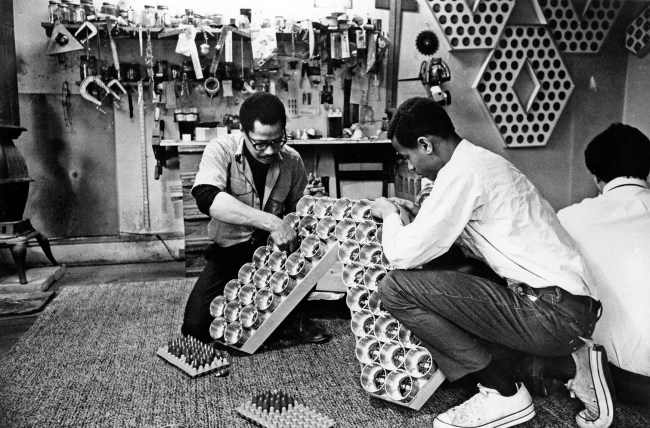Thelma Golden and Connie H. Choi Discuss Tom Lloyd and the Studio Museum in Harlem
In a recent illuminating conversation between Thelma Golden, Director and Chief Curator of the Studio Museum in Harlem, and Connie H. Choi, Deputy Director for Curatorial Affairs, they delved deeply into the succinctly rich life and work of artist Tom Lloyd, shedding light on his artistic contributions and the museum’s role in nurturing contemporary art.
Exploring Tom Lloyd’s Artistic Legacy
Tom Lloyd is celebrated for his mastery of color and texture, often embedding complex socio-political themes within his work. Golden and Choi highlight how Lloyd’s unique visual language resonates with the African American experience, capturing both historical narratives and contemporary realities. His pieces reflect a profound connection to his heritage, marking him as a pivotal figure in the narrative of American art.
In their interview, Golden cites a specific work of Lloyd’s that poignantly illustrates this connection. She discusses how the interplay of color in his works serves not merely an aesthetic purpose but as a means of storytelling, weaving layers of meaning that invite viewers into an intimate dialogue about identity and belonging. These themes are particularly vital within the context of the Studio Museum, which aims to amplify the voices of artists of African descent.
The Role of the Studio Museum
The Studio Museum, located in the heart of Harlem, serves as a vital hub for artists, and its focus on contemporary art made by people of African descent sets it apart from other institutions. Golden emphasizes the museum’s commitment to fostering a space where artists can create, present, and discuss their work.
Choi discusses the museum’s various initiatives designed to engage with local communities and provide platforms for emerging artists. Programs like “Artist-in-Residence” allow for collaboration and experimentation, with Lloyd himself having benefitted from this supportive environment earlier in his career.
Curatorial Practices and Challenges
Golden and Choi also touch on the intricacies of curatorial work within the museum. They discuss the challenges they face in presenting works that resonate with diverse audiences while remaining true to the artists’ intentions. Curating exhibitions involving artists like Lloyd demands a delicate balance between artistic authenticity and audience engagement.
Choi mentions the importance of research in curatorial practices, referencing the extensive historical context surrounding Lloyd’s work and its relation to the broader art world. This research is key to crafting exhibitions that not only showcase the artists’ talent but also educate and inspire visitors.
Community Engagement and Impact
Community engagement is another focal point of their discussion. Golden expresses the museum’s mission to engage with Harlem’s rich cultural landscape and its diverse residents. Events and open forums provide opportunities for dialogue, allowing community members to interact with artists and curators directly.
Choi highlights successful outreach programs that have fostered relationships with local schools and organizations. These initiatives encourage young people to explore art as a form of expression, reinforcing the museum’s dedication to nurturing the next generation of artists and art enthusiasts.
The Future of the Studio Museum
As the conversation unfolds, both Golden and Choi share their visions for the future of the Studio Museum. They discuss upcoming exhibitions that promise to further the dialogue around contemporary African American art, with plans to introduce more international perspectives. Through collaborations and partnerships, they aim to broaden the museum’s reach and influence.
The Studio Museum is undergoing its own transition, with plans for expansion that will allow for a greater variety of programming and exhibitions. Golden emphasizes that such growth will not detract from the museum’s primary mission. Instead, it will enhance their ability to serve both artists and the community.
Through their insightful dialogue, it becomes apparent that the legacy of Tom Lloyd and the initiatives at the Studio Museum in Harlem are deeply intertwined. The conversation reflects a thoughtful examination of how art can facilitate discussions about culture, identity, and community, ensuring that the narratives we tell shape our collective history and vision for the future.



